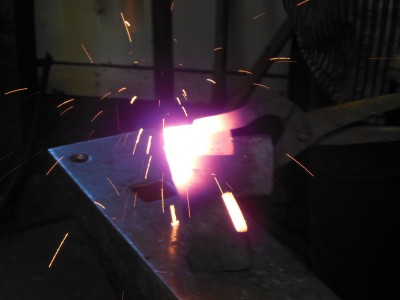
Axe Tour of Norway and Sweden: Part 4
On June 29, 2015 by jaustinFrom Oystein’s smithy I made my way by train and bus back north in Norway to the small town of Trysil on the border with Sweden. The next blacksmith of my Scandinavian axe journey, Mattias Helje, picked me up there and took me to his home and smithy in western Sweden in the town of Lima. Lima is in Dalarna county, which is steeped in tradition and has a long history of iron smelting and blacksmithing. With plentiful, clean charcoal fuel and pure iron ore, Sweden has long been famous for the quality of its steel. This steel was highly sought after in Europe for tool making for centuries – I recall it being specifically mentioned as the most prized material for anvil faces at the Refflinghaus anvil smithy in Germany in the 1980’s when I researched anvil forging tradition there. As I had hoped, Mattias forged a socketed axe for me of a type that is widespread in Sweden. He referred to it as a “carpenters axe” and told me that it hailed from central and northern Sweden. It was developed in the late 19th or early 20th century and was used through the 20th century. The particular axe that he reproduced for me was originally forged by Nygårds Martin Olsson (1859-1925). The unique, socketed eye is beautiful in form and, in Norway, is called a “Swedish Eye”.











































































































I’m going with you next time
many thanks for posting and taking such time and effort over this to the both of you. Excellent work, much appreciated.
Really awesome picture sequence. I’ve done some wrap hawks and want to do this! Thanks!
that one looked like it lt took a little awhile but i like how you do this by hand
James,
What a wonderful picture tour. It included the art of an experienced smithy at a traditional forge. It resulted in a beautiful, historic, wood working tool. I expect it is in your treasured collection.
I must come visit your foundry and introduce myself. I grew up with your uncle Larry.
Thanks for sharing! This was exactly what I was looking for..
Best regards from Denmark.
A worderful photo journey through the “Swedish Axe experience”, Thank You for the effort of showing us the intricacies of this rather complex forging project.
Greetings from a Carpathian axe carpenter – small mountain village, 7 km from Ukrainian border, south eastern Poland.